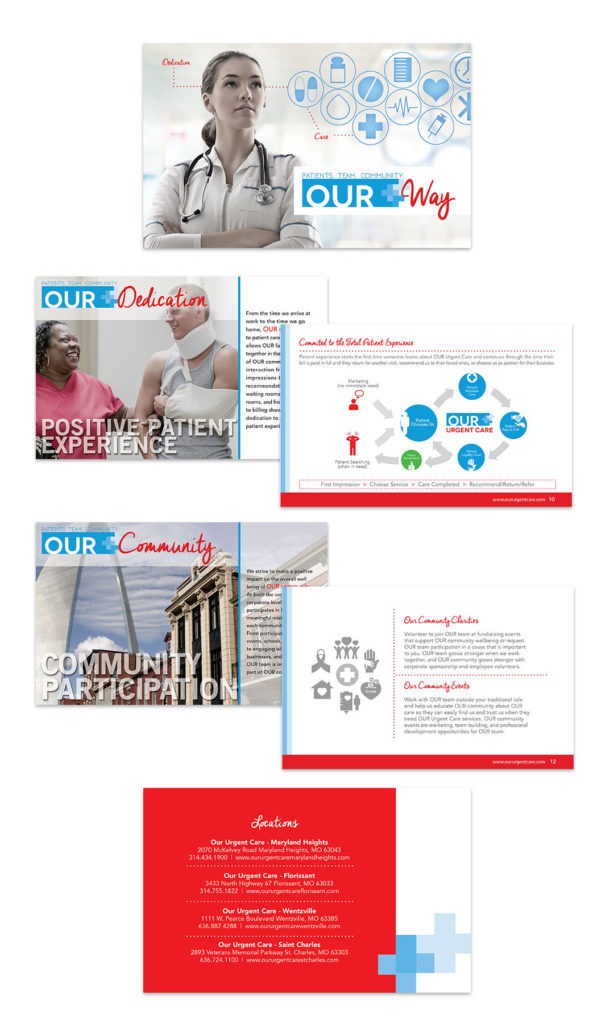
When it comes to the topic of B2B sales collateral resources, certain questions are frequently asked:
- "What types of sales collateral will we use to support our efforts?"
- "What should our sell sheets look like?"
- "When is the best time to present the collateral to a prospect?"
- "Who is the target of the sales collateral?"
One of the time-honored disconnects between marketing and sales is the development and use of sales collateral, developed by the marketing team for the sales team to use. But the sales department either complains that it doesn’t work or flat out doesn’t use it at all -- an inefficient and frustrating experience for both parties.
The net result is that the labor hours spent creating sell sheets, sales presentations, videos, infographics etc. often is wasted. We have seen entire closets of unused sales collateral. Some try to “fix” the broken collateral but this is usually an exercise in futility and wastes even more resources. The cycle then repeats itself, generating further waste and frustration.
So why does this happen?
Here are some of the primary reasons we have identified why sales collateral can go awry:
1. Too Much Focus on Making It “Look Good”
At the beginning of the design phase, too much emphasis is put into creating collateral with "pop". Creating visually appealing collateral is very important and can go a long way in communicating your message effectively. However, the issue is the timing and order of importance.
Starting with design over substance is truly putting the cart before the horse. No amount of "pop" can make up for a message that doesn't resonate with your buying audience.
2. Making Assumptions On What Your Audience Knows
It is amazing how often people forget that the purpose of sales collateral is to communicate your value -- so that the customer "connects" with it. The amount of assumption that goes into "we know our value" or "we have already documented our value so let's just get it down on paper" is astounding.
We have seen companies spend hours upon hours on visual collateral design but when asked about the content, the marketing team states they are either working to convert what was already given to them or they came up with "some really good content" in a quick 30-minute whiteboard session. No effort is made to validate the content effectiveness by either the marketing team or the sales team. If the content is poor, then the proverbial "lipstick on a pig" adage applies.

3. The Sales Team Doesn’t Use It
Whether anyone likes it or not, the sales representative is the final arbiter of your company's sales collateral. If the collateral is not functional to how your sales team presents and sells to the customer, they will simply not use it, or may even modify your value message with their own message.
Multiple messages from different people on your team from marketing to sales to customer service only confuses your customers and undermines trust.
4. Collateral that Cannot Be Used Seamlessly in the Sales Process
Advancing the customer through different stages of the selling conversation is the cornerstone of the overall sales process. Salespeople sell different types of value to the customer based on what sales stage they feel they are in at present.
Much like you wouldn't (or shouldn’t) offer the value “getting married” on a first date, it is important that the sales collateral being employed communicates the value message appropriate to the proper stage of the sales conversation.
If the created collateral can’t be used for a common stage of the sales process or conveys the wrong message at any stage, it can derail the entire process!

5. The Sales Collateral Doesn't Communicate What Your Solution Truly Means to the Buyer
How many times have you seen sales collateral that is a long-winded explanation of how amazing the company is, or explains the company's product/service with the detail of a NASA launch-sequence paper? Not quite as bad as the misdemeanor of explaining all 56 features of the product/service that will be yours once you decide to buy.
The problem with this is that customers make buying decisions on what it means for them to have your product or service. Most sales collateral we see doesn't properly address this dynamic. As a sidebar, a big misconception we see is the belief that outlining "the benefits" addresses what it truly means to the customer to have your offering. It doesn't.
There are more reasons for ineffectual collateral but these five should give you pause and provide something tangible to get you pointed in the right direction. By the way, have you held a joint discussion on collateral design and usage with marketing and sales teams lately? Probably a good 1st step.




